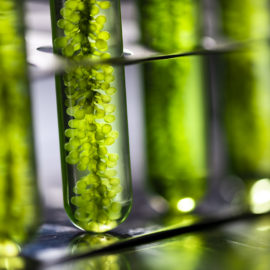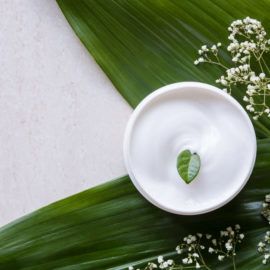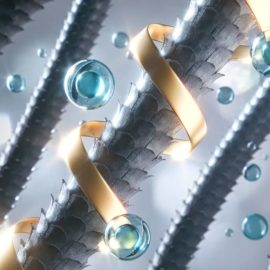Botanical extracts have gained significant relevance in cosmetic science today. Both cosmetic companies and consumers are increasingly turning to botanical extracts as natural, plant-derived ingredients.
As cosmetic science advances, it’s possible to enhance the efficacy and appeal of products based on botanica extracts while putting sustainable practices at the forefront.
However, not all botanical extracts are made the same, and certain processes guarantee better results in terms of cosmetic efficiency.
Content
What are botanical extracts and how they have become the key for cosmetic success
Botanical extracts are substances derived from various parts of plants (leaves, flowers, stems, roots, and/or fruits) using different extraction methods.
As such, these extracts can be understood as concentrated forms of the plant’s active compounds. In fact, botanical extracts can contain a wide range of bioactive compounds, including phytochemicals, flavonoids, alkaloids, terpenes, and polyphenols, among others. These compounds are responsible for the plant’s therapeutic properties and may have a wide range of beneficial effects when used appropriately. This has turned botanical extracts into a crucial part of multiple industries, including their medicinal, cosmetic and culinary applications.
In fact, this aligns with current consumer preferences for cosmetic ingredients that are made from plant-based, natural ingredients. As such, these are considered safer for the skin by large portions of the population (87% in China, 81% in Mexico, 58% in the USA…). This goes hand in hand with the fact that botanical extracts involve a scientific method, as 65% of women have greater trust in products created by scientists, all according to 35 Mintel Consumer Research (2020).
Provital’s Caremotives™: botanical extracts done right
When looking at botanical extracts, ingredient efficacy and quality, it’s important to consider the particular extraction process that is used.
Generally speaking, any extraction process involves isolating the desirable components from the plant material and discarding the rest.
Some common extraction methods include solvent extraction (in which plant material is soaked in a solvent to dissolve the active compounds); steam distillation (used to extract essential oils from aromatic plants), cold pressing (employed to extract oils from citrus fruits) and supercritical fluid extraction (where the solvent is replaced by a supercritical fluid, usually carbon dioxide), among other methods.
However, the truth is that, simply put, high quality natural botanical extracts must ensure the higher number of concentrated molecules with cosmetic activity are obtained.
Here’s how we do it at Provital. In order to guarantee the highest quality of botanical extracts, we:
- Only use selected parts of the plant
- Perform one single extraction, without any dilutions that would minimize the extract’s concentration, colour and fragrance
- We calculate the INCI extract value considering the molecules with cosmetic activity extracted from the plant, going beyond other practices that could be misleading and provide an inadequate reflection of the quantity of molecules with cosmetic activity,
- We undertake control activities to make sure we meet the best quality standards. This involves our use of thin-layer chromatology (TLC), a powerful analytical technique to assess the quality and identity of botanical extracts and their chemical composition. We also carry out High-performance liquid chromatography (HPLC) to ensure high cosmetic effectiveness by separating, identifying, and quantifying individual components in a complex mixture
- Our quality analysis in every step of the process guarantees the highest concentration of active molecules in our botanical extracts. This involves performing control Fourier Transform Infrared Spectroscopy (FTIR), a powerful analytical technique used to identify and analyse the functional groups present in a sample based on its infrared absorption spectrum. WATER control tests, as well as raw material control, final product control and packing control ensue to continue our high standards regarding botanical extracts.
- We ensure a transparent and documented work processes for each extract, including technical data sheets, safety data sheet, raw material documentation and product regulatory information.
Throughout these processes, our focus is on providing real guarantees for our clients, while facilitating brands to transmit transparent product information to their customers.
As such, our CareMotives™ offers a wide range of botanical extracts to inspire innovation and efficacy in cosmetic science while promoting authenticity and transparency.
Watch our video to learn more about how we make our botanical extracts and why it leads to sustainable, high-quality ingredients.
No comments yet
There are no comments on this post yet.





Leave a comment